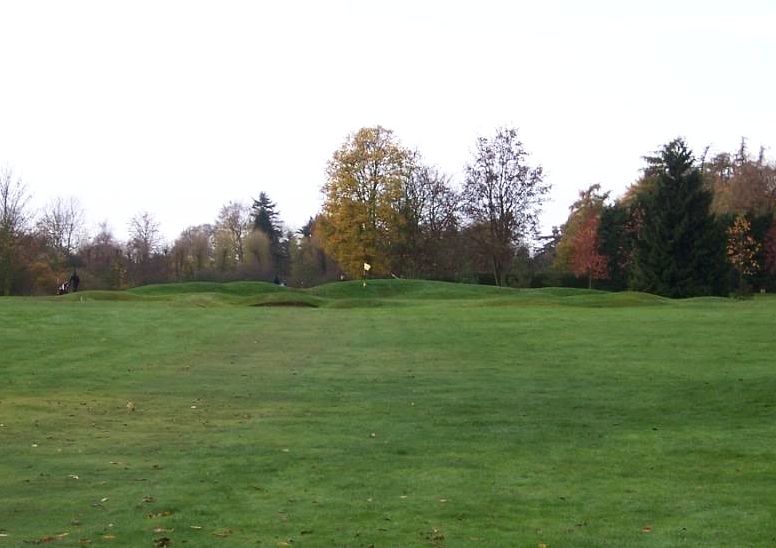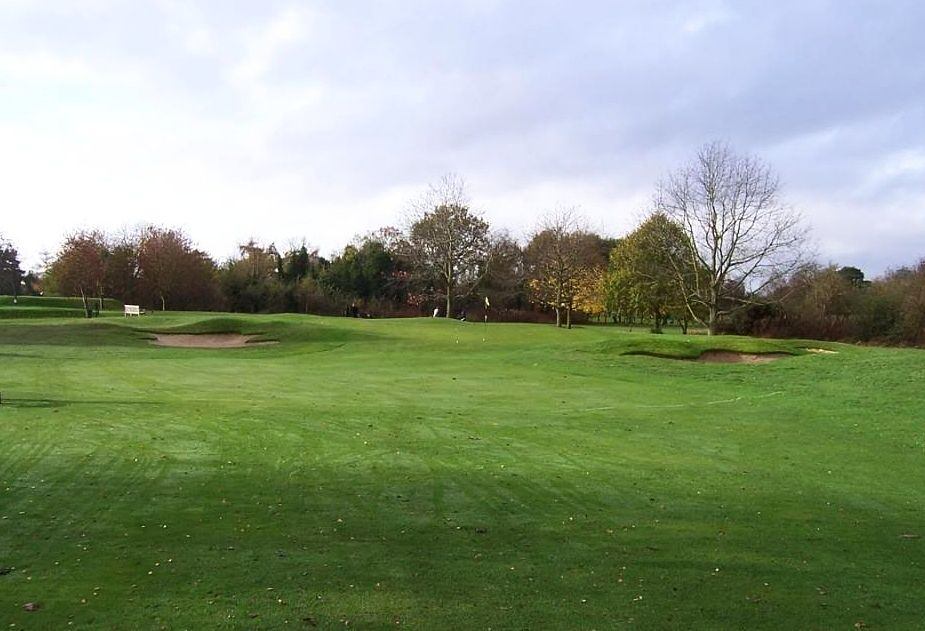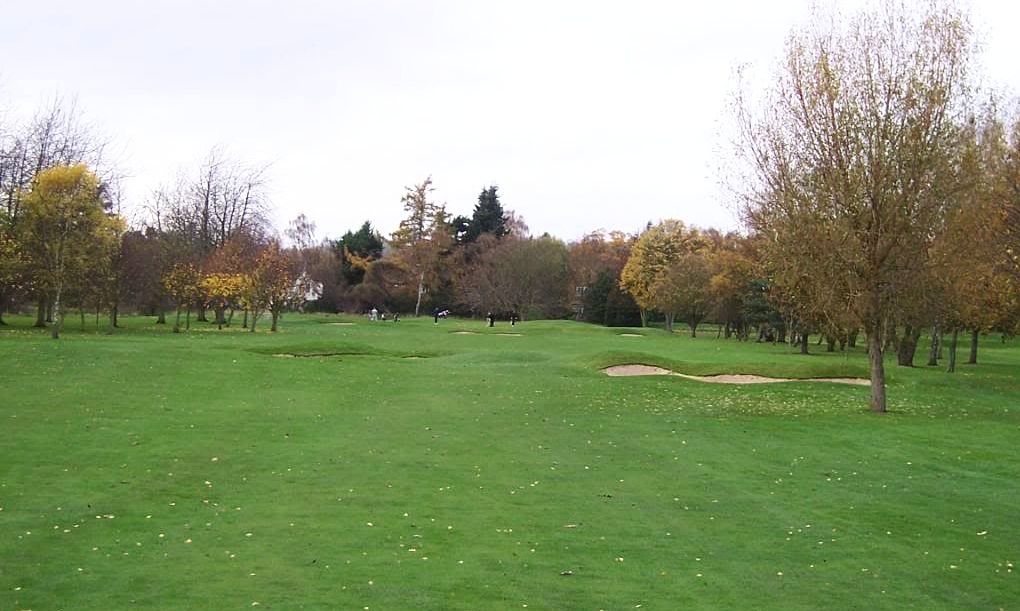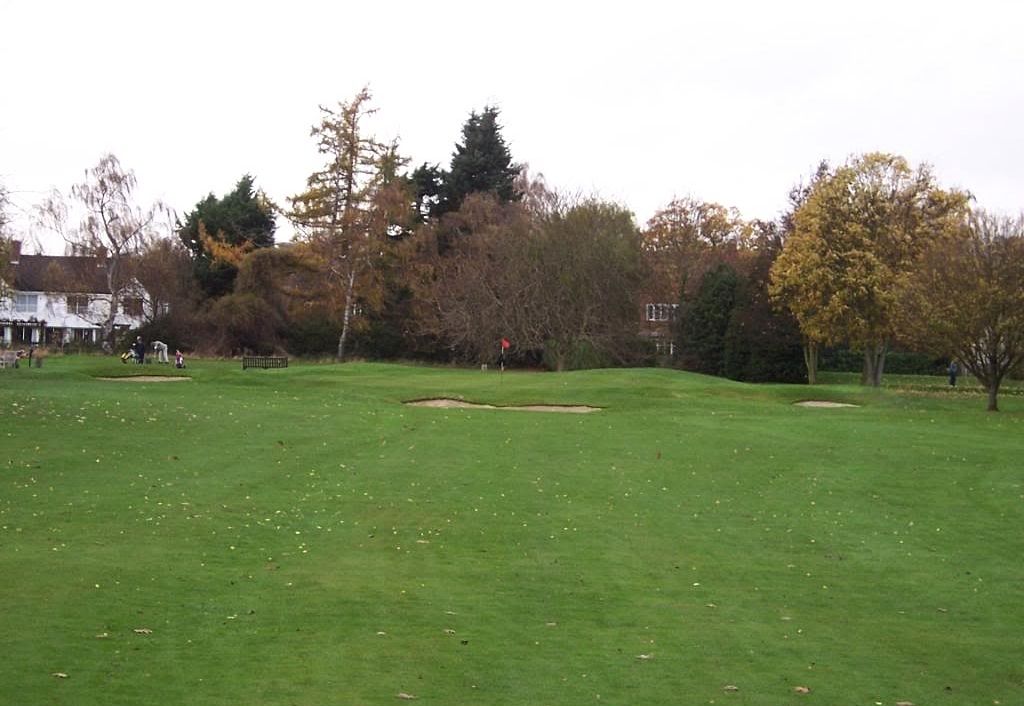The club is located less than a mile from the centre of Stratford and quite close to the River Avon. This is the third site for the SuA GC, the first location was at Wilmcote (a nearby village), famous as the home of Mary Arden (the Bard's mother) and Shakespeare's birth place. The club next moved to the current site of the Welcombe, a large hotel and golf course complex and finally to the current site at Tiddington. Stratford is only just down the road from me, yet despite some recommendations it has taken me over 11 years to make the journey. Sitting in the house before the game my fears of a flat course with a back and forth routing were heightened. While "flat" is justly the first description which comes to mind, there is none of the back forth routing. Hawtree and Taylor's 1925 design (constructed by Carter & Co) cleverly moved the two loops of nine to the edge and through the middle of the property to take advantage of the capricious nature of the wind. Unfortunately, some rather pointless tree plantings have negated some of this design strategy. The greens were a bit too receptive, but it was a pleasant surprise to see tee shots bounding high in the air. Apparently, the course drains very well (indeed, I find it better drained than many a high profile heathland course) because there is a deep under-bed of gravel and sand. In fact, during and after WWII, gravel was excavated from areas on and near the 10th, 16th and 17th holes.
No discussion of SuA GC is complete without mentioning Samuel Ryder's long association with the club. He served as Captain and President and his association with the Ryder Cup may well be the reason JH Taylor helped design Stratford. The club is proud of the association with Mr Ryder and a nook of the house contains interesting memorabilia of the man, the competition and origins of the club.
#1 highlights a pattern of green-side bunkering left and right which is common at Stratford.

The short 2nd is one of the superb set of par 3s.

A closer look reveals hidden bunkers and the two-tier green.

The 3rd takes us to another two-tier green on the edge of the property. #4 is a longish two-shotter which is very narrow due to trees pinching on the left and OOB down the right. With the exception of the bunkering, the 4th green struck me as very Colt-like. For sure, it wouldn't have not phased me at all if someone told me Colt designed Stratford.
The 5th is another longish par 4 down the property line, but wisely OOB is not prevalent. Instead, water awaits near the green. There are many centre-line bunkers featured, though I don't think there were meant to be many wing bunkers originally. A DRASTIC narrowing of fairways and tree encroachment have largely changed the nature of the bunkering scheme. Interestingly, the style of the bunkers is not that altered from the originals. Below is the approach to #5.

The short 6th looks as if it was plopped onto the landscape, but it is a very effective design. As on a handful of other holes, the mounding/bunkering suggest a wide, receptive green, but this is not the case at all. The green is actually quite narrow and perhaps 35 yards long.


#7 is a rather straightforward par 5. The eighth is a lovely short par 4 curling right around trees. It is easy to hit into the left rough because the hole turns around the 210 yard mark. The "dead ground" concept is employed quite often at Stratford and the predictable result of coming up short is often evident.

The final hole on the front turns left and heads straight for the house. Once again, the shaping for the green complex and slight angling of the bunkers suggests a wide green. I think too the house encourages this false belief as it perfectly frames the green.
The back nine is far superior to the front. Not only is interesting bunkering more in evidence, but also gravel excavation is more apparent. I am a bit surprised the 10th green wasn't extended or shifted slightly to take advantage of the steep incline created by the excavation. Just the same, this is a good par 3 whose green shape is yet again deceiving.

The 11th is a modest length par 4 turning right around, well nothing but a few scraggly trees! I think the hole used to present a clear set of options as dictated by the green and the hole location of the day. On the one extreme, a player could go well left to gain the angle. On the other extreme one could go straight at the green, but likely would face an approach over the bunkers to a narrow green. I surely would rather have seen a perplexing setup such as this rather than the arbitrary fairway we now see. Still, one gets a sense of the option for the approach - especially into a hard wind.

The par 5 12th is reachable, but dangerous. Below is the approach after a layup.

The next hole, a short boomerang sort of shape to the right is most odd. The green complex is outstanding and very much like Prestwick's Sea Headrig, but like the 11th, trees block access to the best angle of approach. I think this was probably a similar type hole to #11 with the full range of options off the tee until, the advent of trees. Below is the approach after a lay-up.


The 14th is yet another fine short hole with a sharply raised green. The final four holes feature three par 5s. It is difficult to pull off that much big hitting in such a short space of holes. I think the centre-line bunkering on all of these par 5s underlines this difficulty and perhaps it is a bit much. However, the 15th is likely the best of the long holes. Centre-line bunkers menace the drive and the approach.


The final short hole is a dandy! To the left is evidence of more gravel removal.

The penultimate hole takes us over more gravel excavation and as is the case with all the par 5s, this one too is reachable in two.

#18, as was pointed out previously, the bunkers and shaping intimate at a wide green when in truth it is narrow and slightly angled to favour an approach from the left.

I am not sure what to make of Stratford. I can't say I was disappointed because I didn't have high expectations going in. The course obviously has some very good architectural elements in its favour and it boasts a few very good holes. This is especially the case on the far better back nine. The drainage is good and the greens rolled well given the weather. Yet, something is certainly missing and it could simply be the flat nature of the site. I hate to be picky, but it seems to me more of an appearance of elevation change could have been achieved if the bunkering was more high profile. It is often the case that the bunkers fail to make a visual impact. I also think the course would benefit from a handful of greens being on the wild side. Perhaps too if the trees were cleared out a bit and the fairways widened it would also help make a difference. Its frustrating to me because I think this site could and should yield a better product. I would like to see the course in the summer, but at the moment, I wouldn't recommend Stratford unless one is visiting the town and keen to have a convenient game of golf.
Ciao